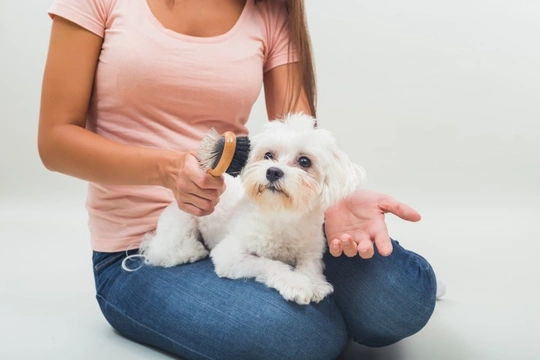
How to groom your dog’s coat before and during the summer
When summer approaches, most of us spare a thought for our furry companions who cannot shrug out of their thick coats to cool down when the weather is hot. For many dog owners, this means clipping or trimming the dog’s coat to help them to keep their cool, but this is not always the only, or even best solution for every dog.
Whether your dog has very short fine hair or is a total fluffball, you should always plan how you will take care of their coat and keep them cool over the summer, and this is something that will be different for every dog.
In this article, we will look at how you can best care for your dog’s coat to keep them cool, comfortable and tidy during the summer, and how to assess your dog’s own coat type to make the right decision. Read on to learn more.
Lots of brushing!
First things first, every dog should be brushed regularly, even if they have a short, fine coat. This not only helps to remove loose hair from the coat itself, but it also stimulates the circulation, and spreads the natural coat oils from root to tip, in order to improve their weatherproofing and prevent their skin getting grubby so quickly.
Keep an eye out for the signs that your dog is about to start moulting to grow in their thinner, finer summer coat, and brush them regularly-every day if necessary-to remove shed fur.
If you have a dog with a double coat or very thick coat, it is the dense, soft under-layer that will be shedding the most, so it is very important to get your comb or brush right down to the roots.
Some dogs such as the Siberian husky and German shepherd are apt to blow their coats-this means that they will lose virtually their entire overcoat over the course of a couple of weeks, as the dense warm lower layer drops out. At this time, you will literally be able to pluck out handfuls of fur with your fingers-this is fine, but can make your dog look rather uneven and patchy for a week or two, until they have shed entirely.
If your dog is from a very low shedding breed, they still need to be brushed and tidied up-all dogs shed hair, but those that do not drop a lot of it around the home have their shed hair retained and tangled in the rest of the coat, which still requires attention!
Make sure you have brushed your dog to the point that they are no longer actively shedding before you make a decision on potentially clipping or trimming.
To clip or not to clip?
A lot of people clip or shave their dogs off over the summer, and for some dogs, this is a great way of keeping them cool and comfortable. However, this is not necessarily appropriate for all dogs, and shaving a dog repeatedly if their coat is not of the appropriate type can lead to a change in the texture of their coat, from soft to uneven and wiry.
While it is natural to feel sorry for a very hairy dog that is wilting in the summer heat, sometimes clipping or shaving them can make them less able to manage the heat rather than more able. This is because just as their undercoat provides insulation against the cold, so too can it insulate against too much heat-and so by shaving the coat of a dog that is used to being very furry may mean that they cannot regulate their body temperature too well, and may get too hot or too cold.
It is of course entirely possible to trim or tidy up your dog’s coat and get rid of the thickest areas without shaving them or clipping al of their fur off, and this is often the best solution for breeds such as spaniels and retrievers, who tend to be active in the summer and have medium-thick coats.
Dogs that have working roles or that take part in canine sport or other vigorous activities may need to be clipped or shaved, in order to permit them to fulfil their working roles without overheating, but this is something that you should assess on a case by case basis.
Thin-coated dogs may need sun protection
If you shave or clip your dog off-or if your dog’s coat is naturally very thin or fine, they may need sun protection rather than help keeping cool, particularly if they have pink skin.
The tips of the ears, nose and any other areas of skin that are exposed and light coloured may burn-which means that rather than shaving, they may need to wear cream or another form of protection such as a cool t-shirt.



